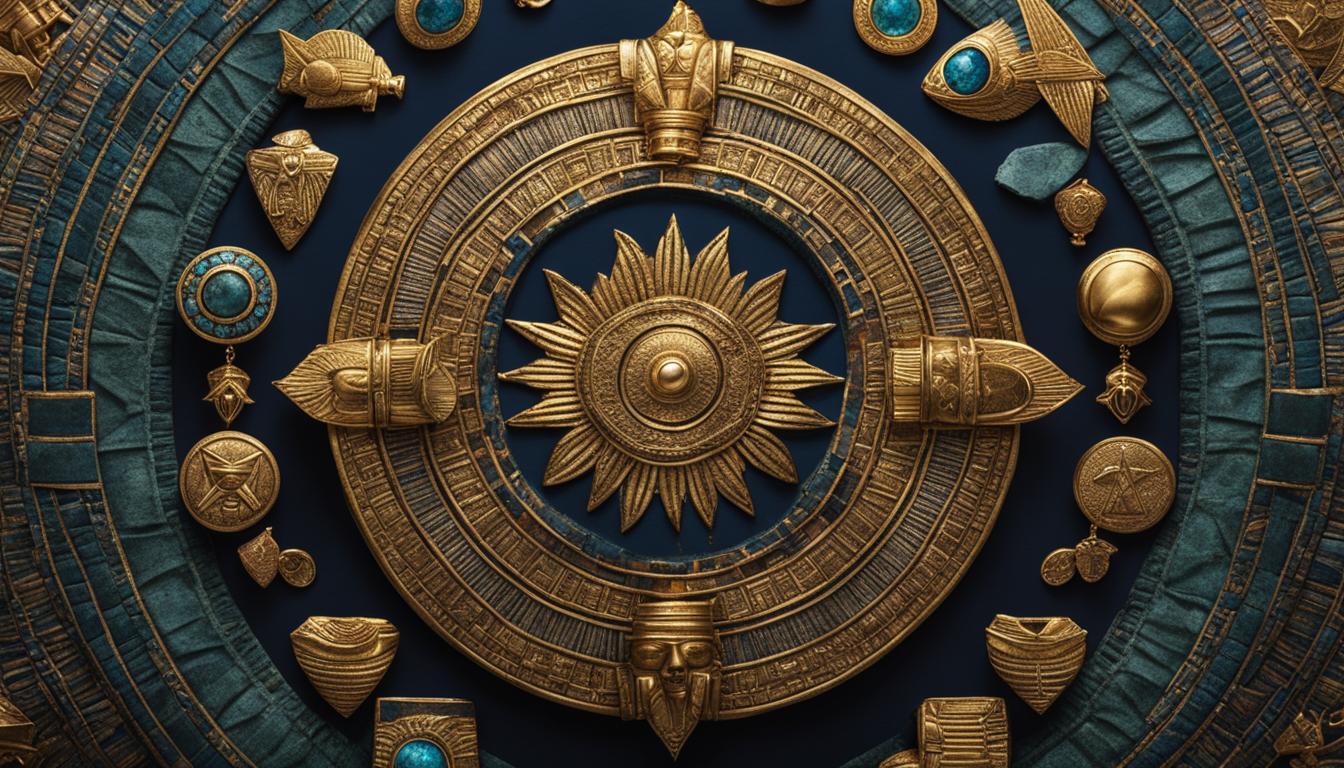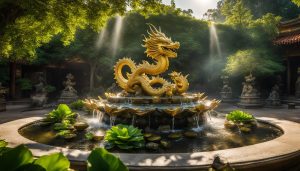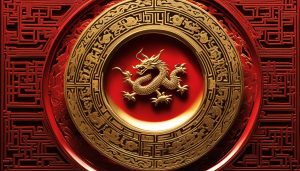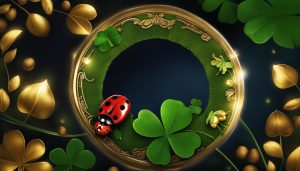In Egypt, good luck charms hold a special place in the hearts of the people. The ancient Egyptians believed in the power and significance of these charms, using them to bring positive energy and spiritual protection. From the iconic Ankh symbol to other traditional lucky charms, the culture of Egypt is rich with symbols of luck and belief in eternal life.
Contents
Key Takeaways
- Egyptian culture values the use of good luck charms for positive energy and spiritual protection.
- The Ankh symbol, also known as the “Key of Life,” holds immense significance as a powerful and enduring charm.
- Ancient Egyptian beliefs center around the cycle of life, death, and resurrection, represented by the Ankh symbol.
- The Ankh continues to resonate in modern times, appearing in popular culture and embodying mystery and ancient wisdom.
- Other good luck charms in Egyptian culture include scarab beetles, the Eye of Horus, and various amulets, representing protection and spiritual beliefs.
The Significance of the Ankh in Ancient Egyptian Beliefs
In ancient Egyptian culture, the Ankh symbol held immense significance and played a crucial role in their beliefs. Representing the key to eternal life, the Ankh was intricately tied to the cycle of life, death, and resurrection. It symbolized the union of opposites and the interconnectedness of all existence, embodying the fundamental principles of Egyptian spirituality.
The Ankh’s importance was evident in various aspects of ancient Egyptian society. It was prominently featured in religious ceremonies, where it served as a symbol of divine authority and protection. The symbol was also depicted in burial rituals, emphasizing the belief in the afterlife and the eternal nature of the soul. Temples and sacred spaces were adorned with the Ankh, further highlighting its role as a powerful emblem of spiritual significance.
With its enigmatic nature and profound symbolism, the Ankh continues to captivate the modern world. Its timeless allure and deep cultural roots have made it a popular symbol in popular culture, art, and spirituality. The Ankh represents not only luck but also wisdom and ancient knowledge, making it a sought-after talisman for those seeking to connect with ancient Egyptian beliefs and embrace their rich cultural heritage.
As we explore the cultural beliefs about luck in Egypt, it becomes clear that the Ankh symbol holds a special place in the hearts of the Egyptian people. Its enduring significance reflects their deep-rooted belief in the fairness of the universe and the mysteries of life and death. Whether worn as a fashion statement, used as a spiritual talisman, or admired for its timeless beauty, the Ankh symbol continues to remind us of the interconnectedness of all things and the enduring power of ancient beliefs.
The Ankh as a Modern Symbol of Luck and Wisdom
While the Ankh originated in ancient Egypt, it continues to resonate with people worldwide in modern times. The Ankh’s enigmatic nature and multi-layered symbolism have made it a popular symbol in popular culture, appearing in movies, video games, and art. It is often associated with mystery, power, and ancient wisdom. In contemporary spirituality, the Ankh is considered a talisman that brings positive energy and spiritual protection. Its elegant design and timeless significance make it a favored choice among those seeking to embrace ancient wisdom and symbolism.
Throughout history, the Ankh has captured the imaginations of many. Its sleek and distinctive shape lends itself well to various artistic interpretations. Artists and designers have incorporated the Ankh into jewelry, clothing, and accessories, making it a fashionable statement piece. Its presence in movies and video games further highlights its allure and cultural significance. From ancient Egypt to modern society, the Ankh remains a symbol that represents luck, wisdom, and the timeless mysteries of life.
The Ankh in Popular Culture
In popular culture, the Ankh has become an iconic symbol associated with various concepts and themes. It is often used to depict mystical and ancient civilizations, adding an air of mystery and intrigue to creative works. The Ankh has appeared in movies like “The Mummy” and “Stargate,” where it represents supernatural powers and ancient secrets. Video games such as “Assassin’s Creed Origins” also feature the Ankh as a significant symbol of magical artifacts and historical lore.
Artists and musicians have embraced the Ankh as well, incorporating it into album covers, stage designs, and tattoos. Its visual appeal and spiritual undertones make it an attractive choice for those seeking to evoke a sense of spirituality, mysticism, or ancient wisdom in their creative expressions. The Ankh’s continued presence in popular culture serves as a testament to its enduring significance and its ability to captivate and inspire people across different mediums.
| Movie | Video Game | Music |
|---|---|---|
| The Mummy | Assassin’s Creed Origins | Album Covers |
| Stargate | Stage Designs | |
| Tattoos |
Other Good Luck Charms in Egyptian Culture
Alongside the iconic Ankh symbol, ancient Egyptian culture boasts a variety of other good luck charms, each with its own unique significance. These charms played a vital role in Egyptian society, emphasizing the interconnectedness of life, protection, and spiritual beliefs. Let’s delve into some of the common good luck charms in Egypt that have fascinated people for centuries.
Horus’ Eye – The Symbol of Protection and Restoration
One of the most prominent good luck charms in Egyptian culture is the Eye of Horus. This symbol represents the eye that the god Thoth gave to Horus, signifying protection and restoration. The Eye of Horus is believed to ward off evil and bring positive energy to those who possess it. Its distinct design, resembling a stylized eye, makes it instantly recognizable and adds to its allure as a powerful talisman.
Scarab Beetles – Symbols of Transformation and Renewal
Another popular charm in ancient Egypt was the scarab beetle. These beetles were not only revered for their connection to the rising sun but also seen as symbols of transformation and renewal. The scarab beetle’s ability to lay eggs in dung, which then transformed into new life, was associated with the cycle of life and the concept of rebirth. Scarab amulets were commonly worn to bring good fortune, ward off negative energies, and evoke transformative powers.
| Good Luck Charm | Meaning |
|---|---|
| Ankh symbol | Eternal life, divinity, regeneration |
| Eye of Horus | Protection, restoration |
| Scarab beetle | Transformation, renewal |
These are just a few examples of the ancient Egyptian lucky symbols that held immense cultural significance. Animal amulets, hieroglyphs, and phylacteries were also prevalent in Egyptian culture and were believed to bring good fortune and spiritual protection. The use of these charms highlights the enduring belief in the power of symbolism and the interconnectedness of life in ancient Egyptian culture.
As you explore the world of Egyptian good luck charms, you’ll uncover a rich tapestry of spiritual beliefs and cultural traditions. Whether you find solace in the elegant Ankh or are drawn to the protective Eye of Horus, these ancient symbols continue to captivate and inspire people around the world. Embrace the wisdom of ancient Egypt and carry a piece of its magic with you wherever you go.
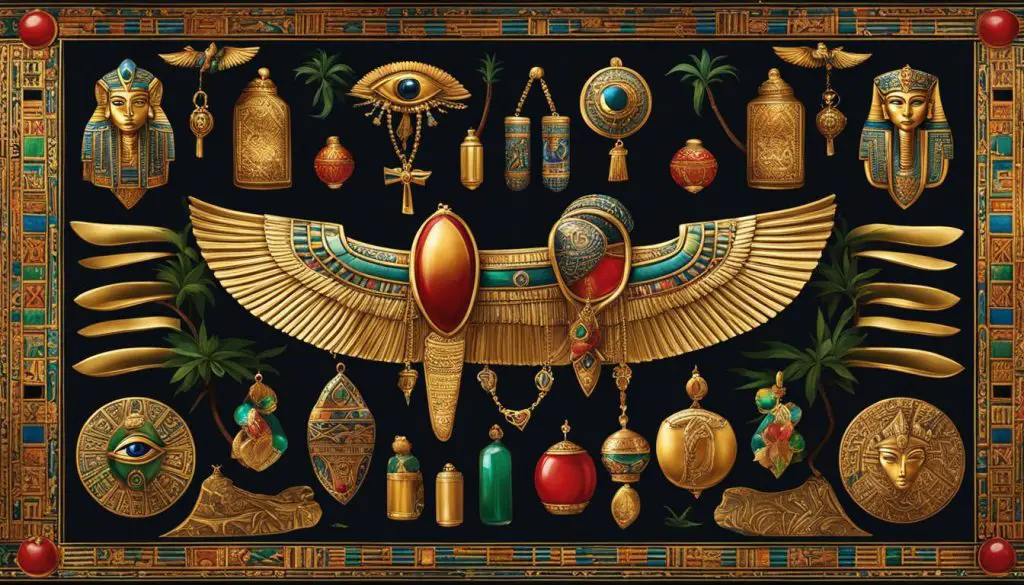
Conclusion
Egyptian culture has a rich tradition of using good luck charms, with the Ankh symbol being the most prominent. These symbols and amulets hold deep cultural and spiritual significance, representing the cycle of life, protection, and the belief in eternal life.
Despite the passage of time, these ancient traditions continue to influence modern society, with the Ankh and other Egyptian lucky charms being revered for their timeless allure and symbolism. Whether as fashion accessories, spiritual talismans, or elements of popular culture, Egyptian good luck charms serve as a reminder of the enduring power of ancient beliefs and the interconnectedness of human existence.
So, if you’re looking for a little extra luck in your life, why not consider incorporating an Egyptian good luck charm into your daily routine? Whether it’s wearing an Ankh pendant or carrying a scarab beetle amulet, these symbols can bring a touch of ancient wisdom and positive energy to your life. Embrace the cultural beliefs about luck in Egypt and let these charms serve as a constant reminder of the mysteries of life and the belief in the enduring power of good fortune.
FAQ
What is the significance of the Ankh symbol in ancient Egyptian beliefs?
The Ankh symbol represented eternal life, divinity, and regeneration. It symbolized the union of opposites and the interconnectedness of all existence.
What is the modern significance of the Ankh symbol?
The Ankh is popular in fashion, art, and spiritual practices. It is often associated with mystery, power, and ancient wisdom.
What are some other good luck charms in Egyptian culture?
Scarab beetles and the Eye of Horus are commonly used as amulets and are believed to bring good luck and protection.

